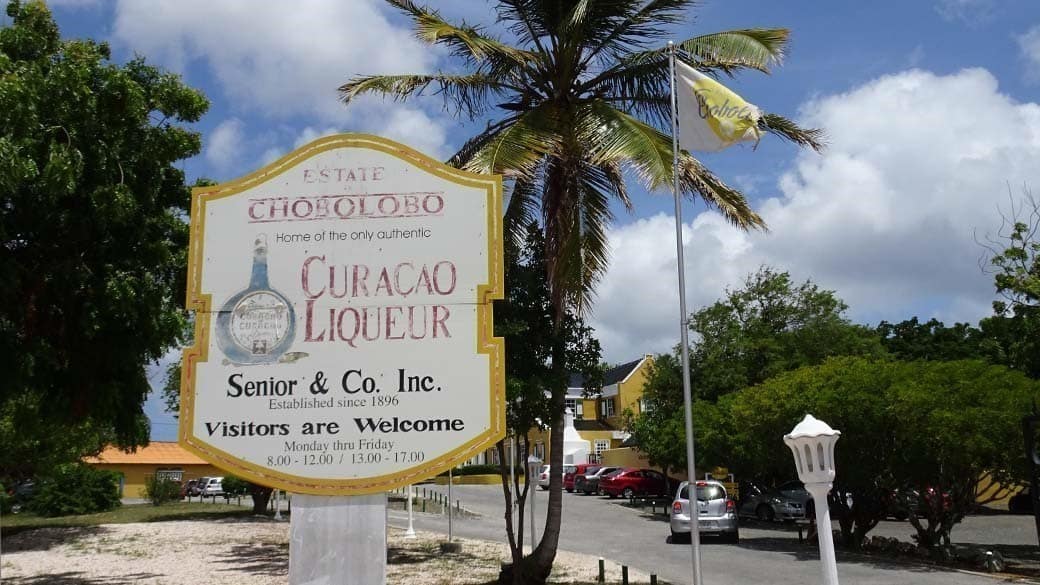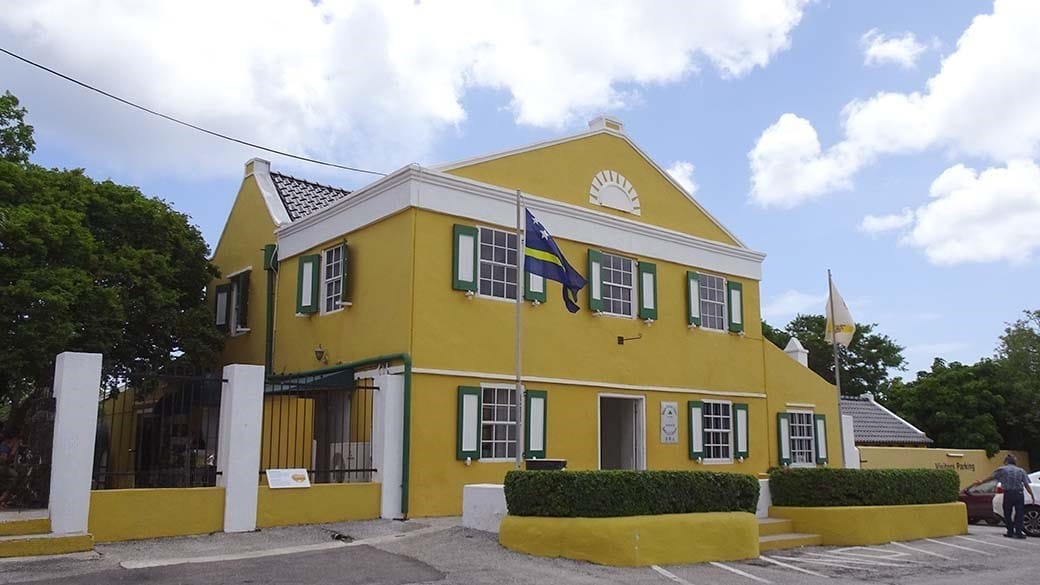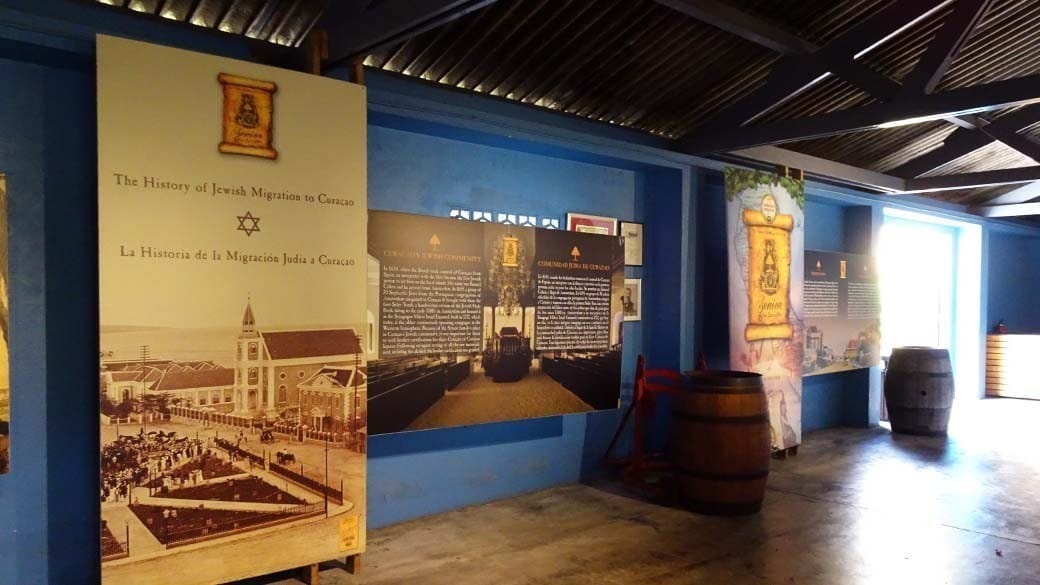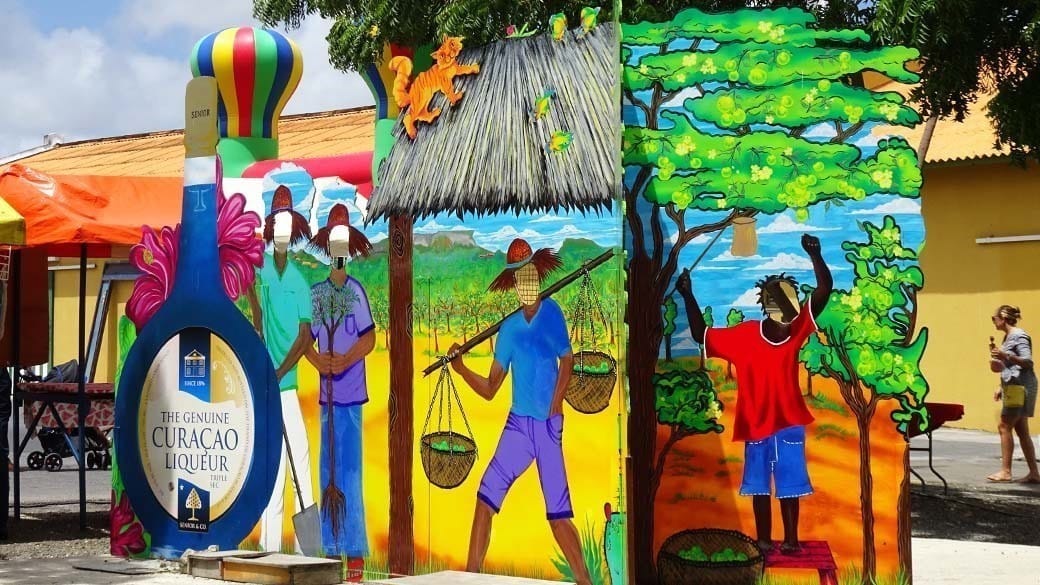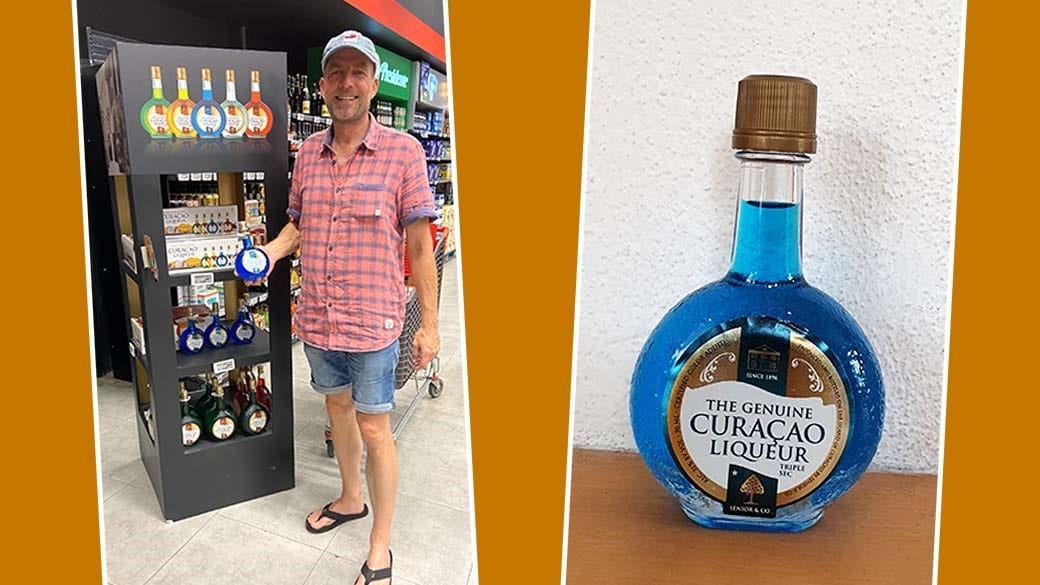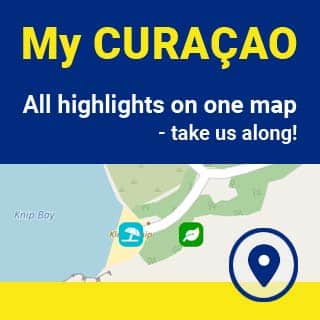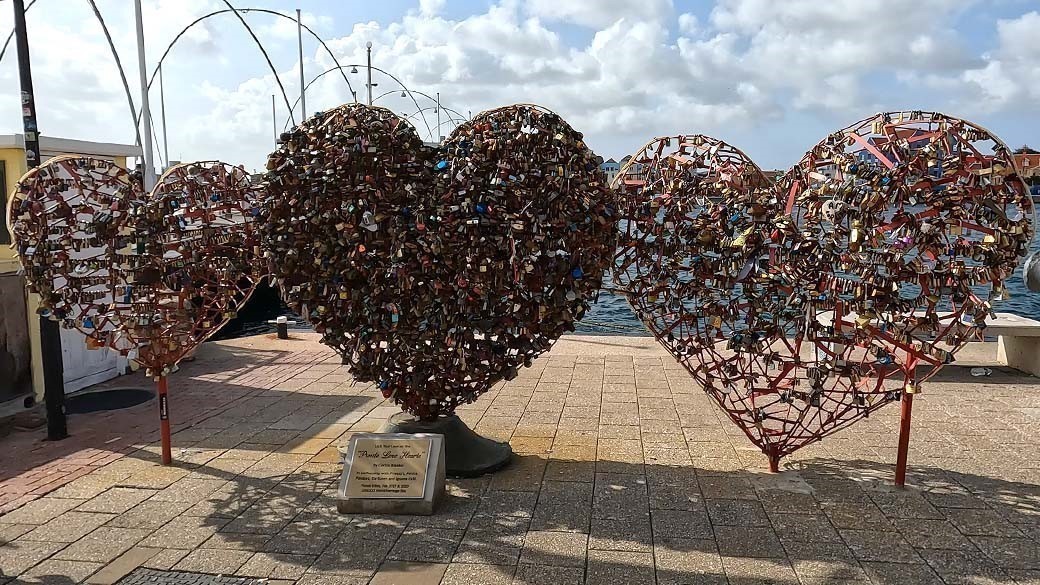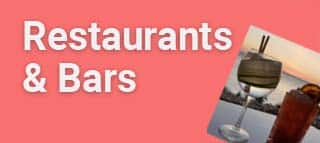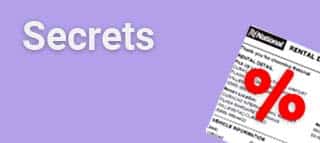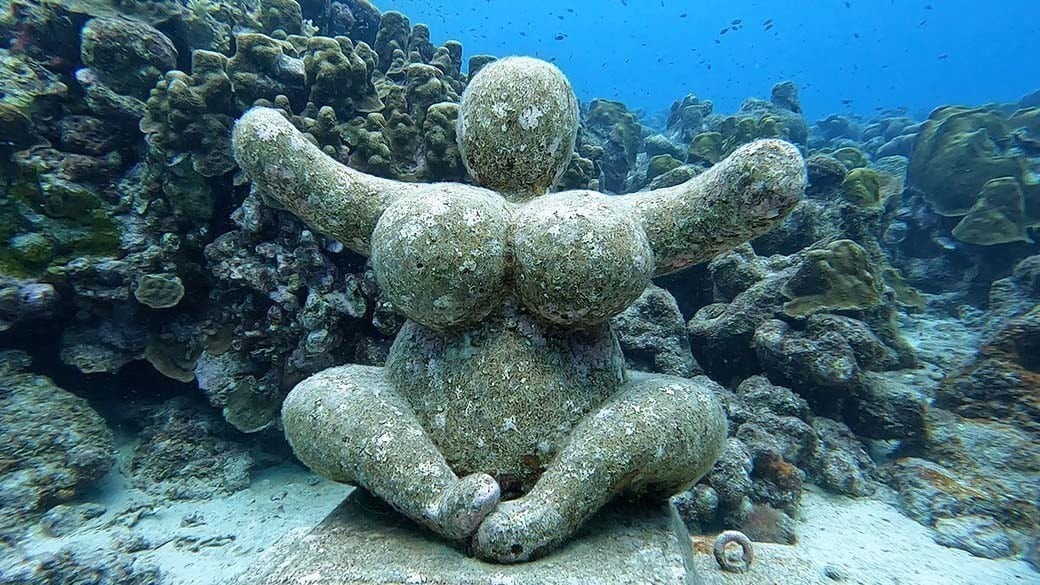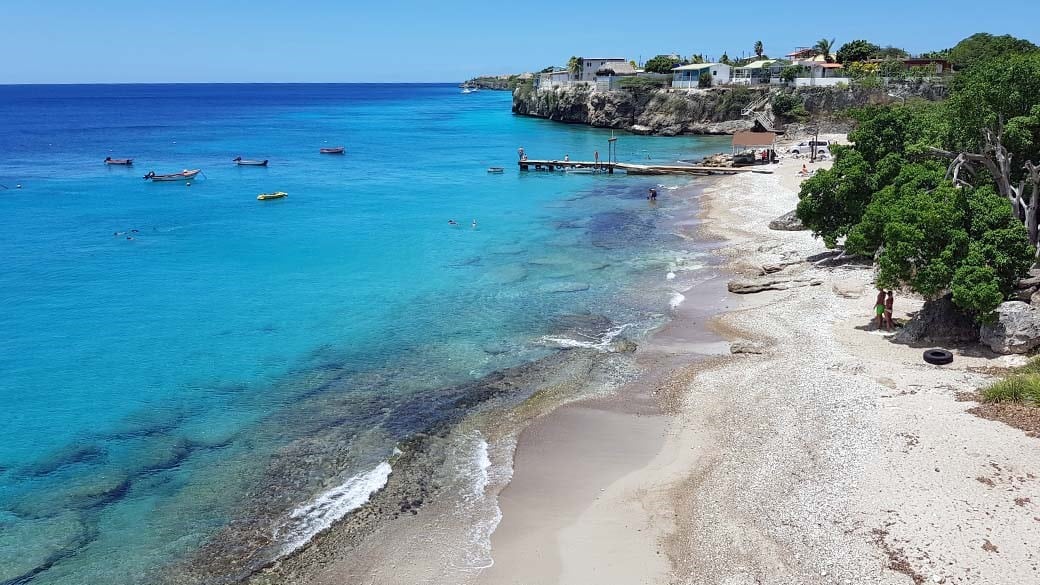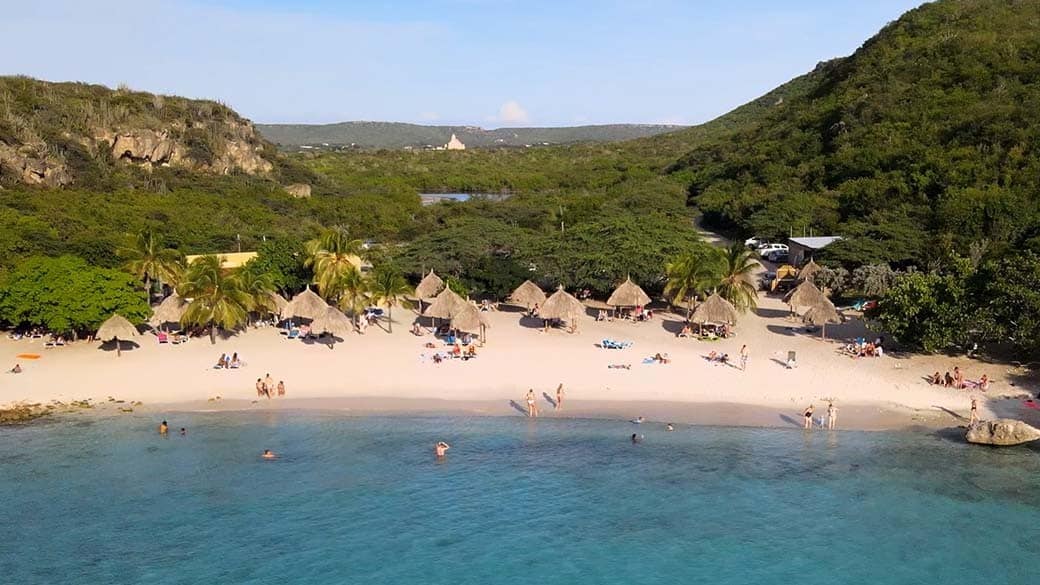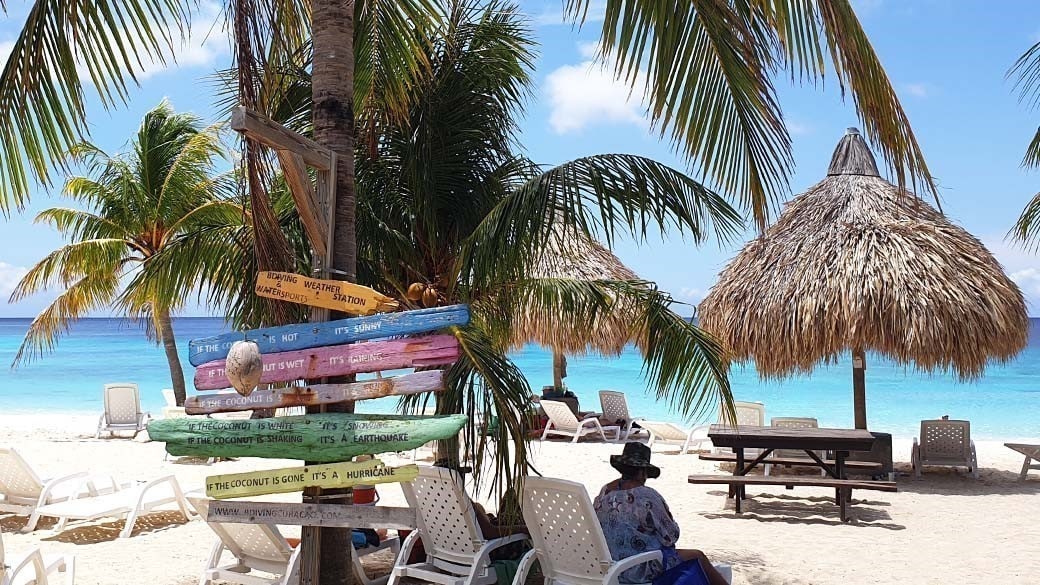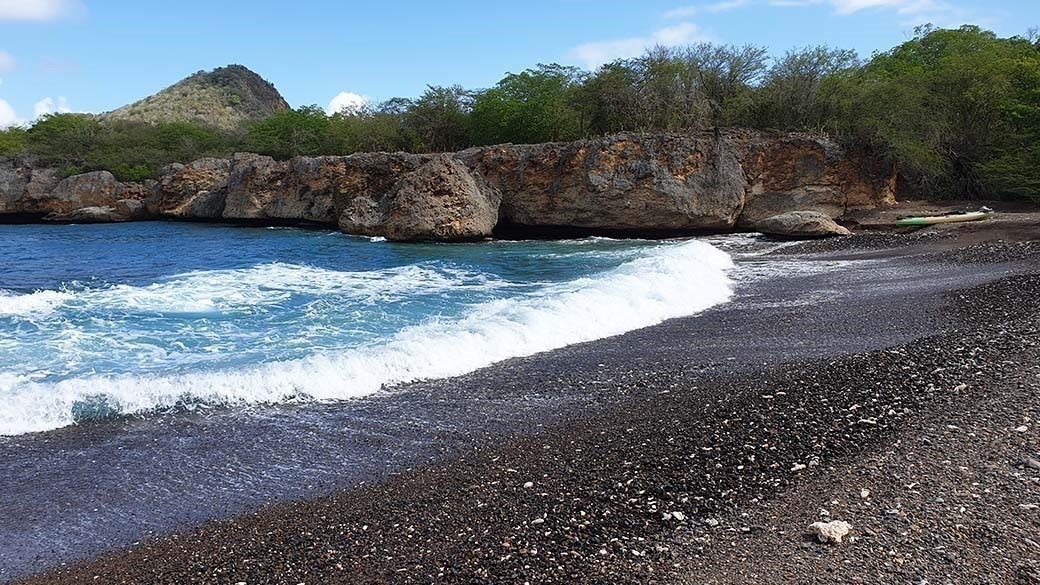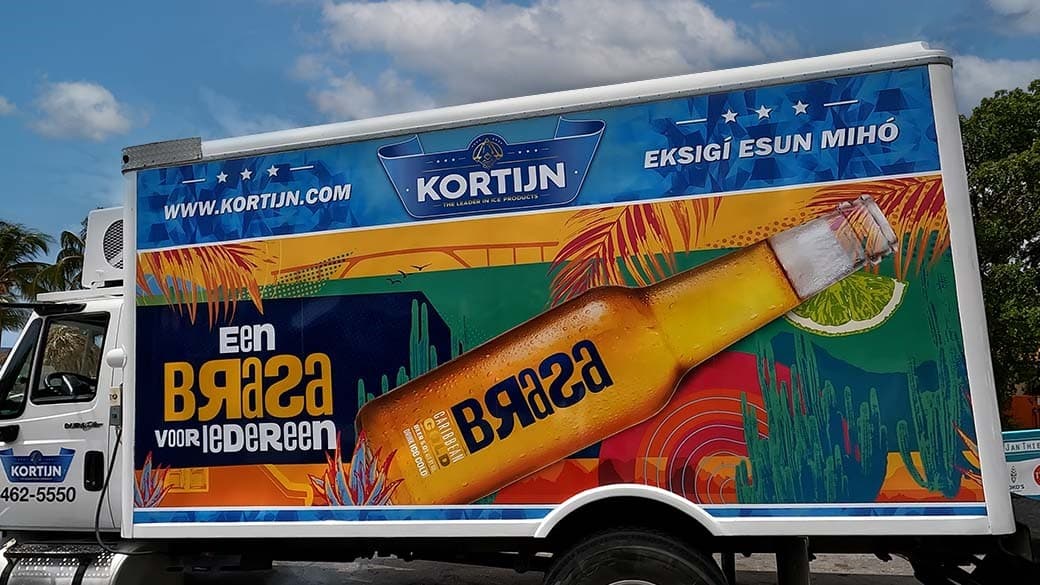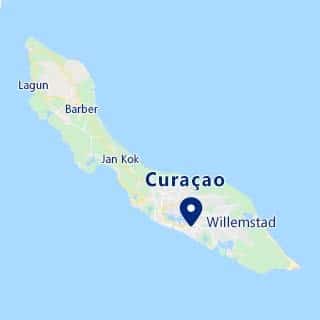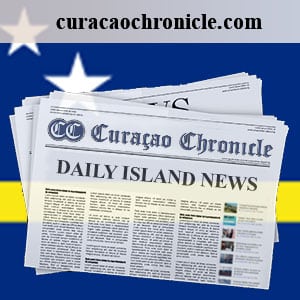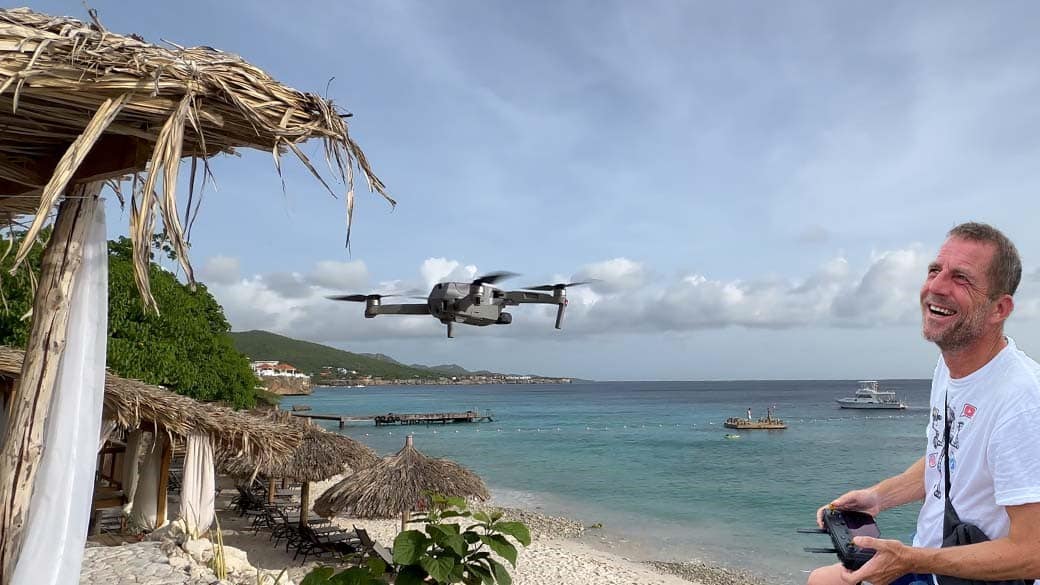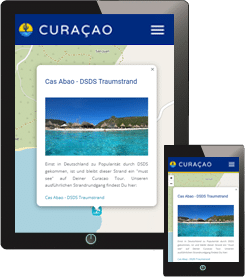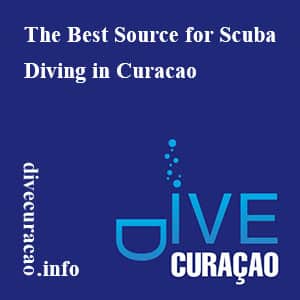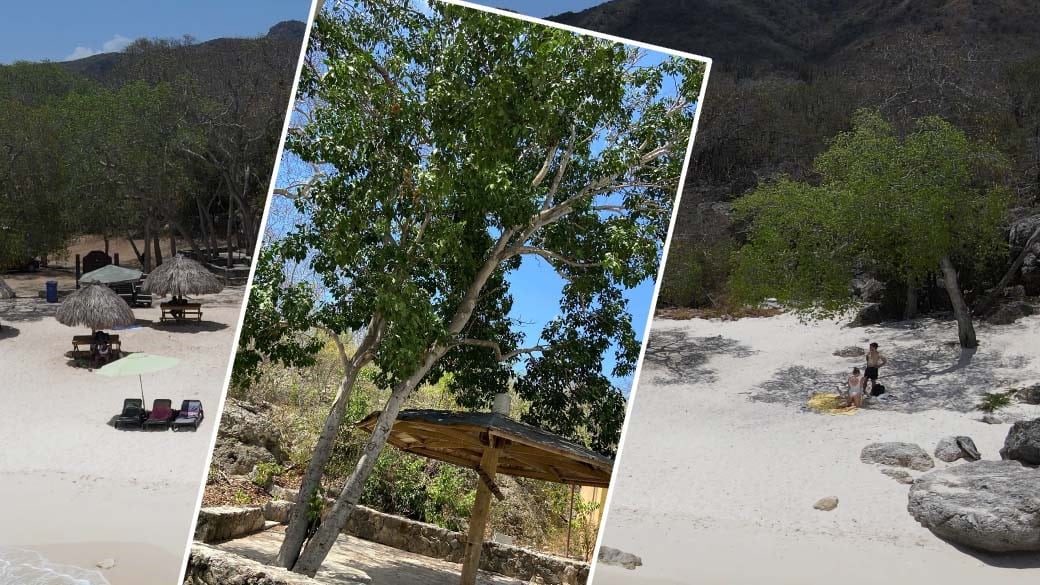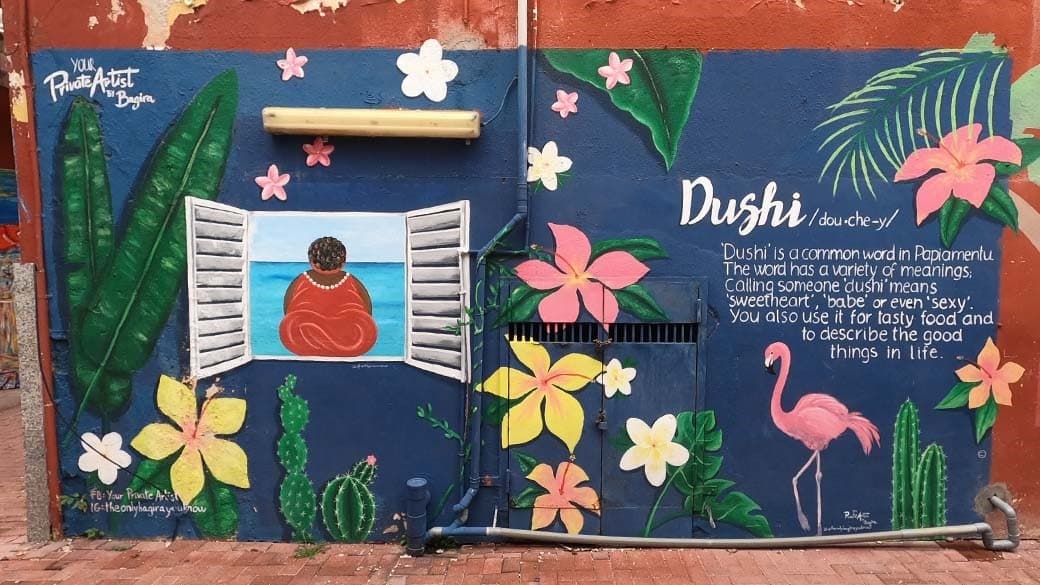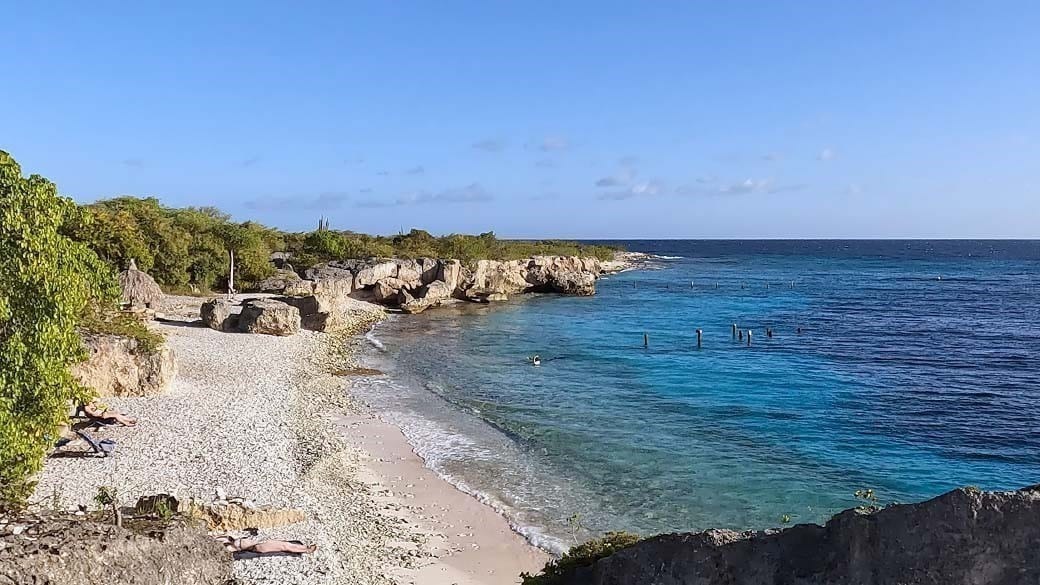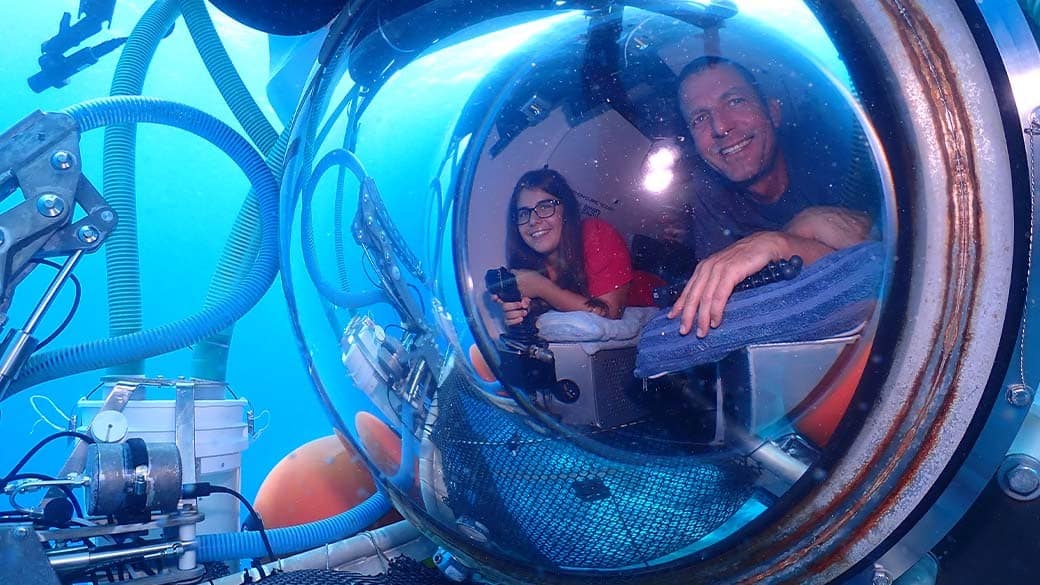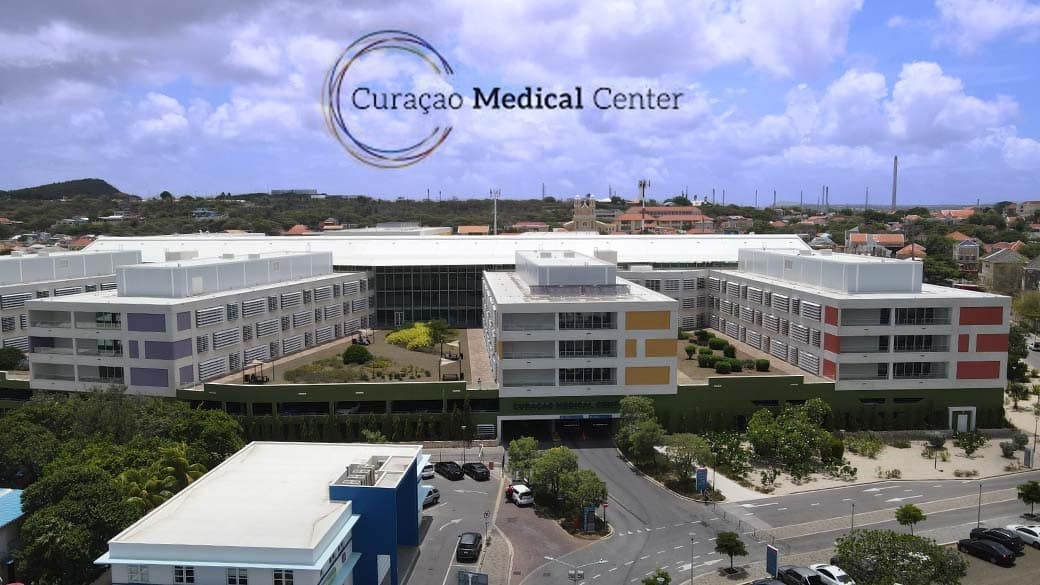Blue Curacao – The Genuine Original
The liqueur factory Landhaus Chobolobo
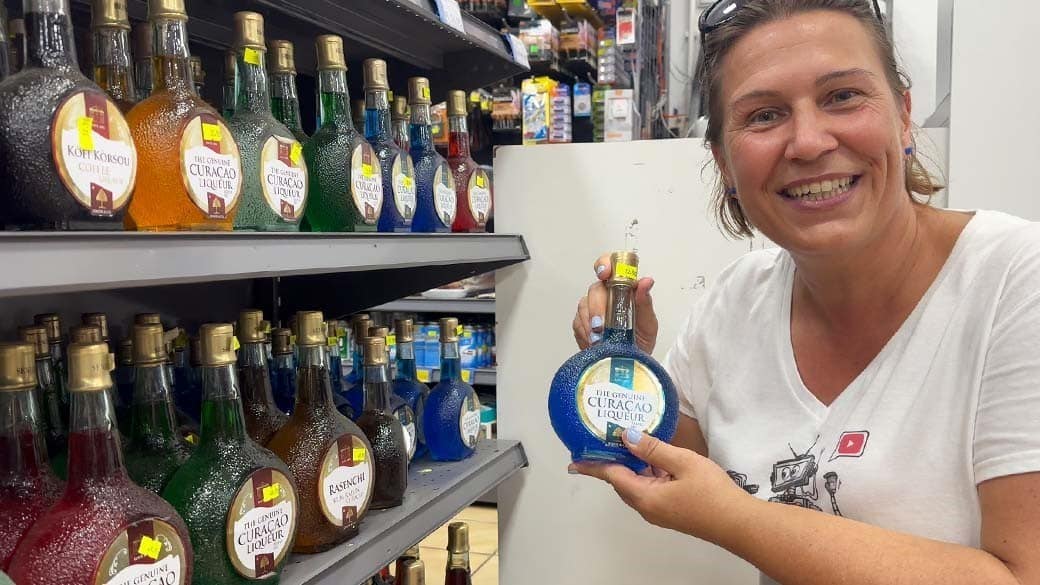
When you hear the name of the island of Curacao, the first thing that usually comes to mind is Blue Curacao. You probably know the bright blue liqueur from the manufacturer Bols as an additive for long drinks or cocktails. But the Blue Curacao liqueurs we know and mix together here in Europe are all just copies. I took a look at the story of the inventor of Blue Curacao. We also personally tried Blue Curacao for ourselves. 😉

Shop window and entrance to ‘The Blue Curacao Experience’ store in Punda
Trip to Landhuis Chobolobo
The Blue Curacao and its sister liqueurs production facility is located in Willemstad in the Salina district, right by the Schottegatweg. It’s pretty unusual for a factory to be in a yellow country house like the Landhuis Chobolobo. But that’s where we went to learn all about the Triple Sec, the different colors and flavors.

Stefan in front of the historic Chobolobo country house
We were lucky enough to stumble upon the Chobolobo country house on an open day without knowing it. There was a lot going on: stalls were set up in the exhibition hall of the distillery and in the courtyard, where local artists were offering their homemade products. All types of liqueur were also available to taste in tiny schnapps bottles. If you can’t decide which variety you would like to take home with you, this will help. You can feel the real liqueur power from the very first sip. No wonder, it has over 30 turns. My absolute favorite is the tamarind liqueur. I like to sip it with a friend from time to time.
The Landhuis Chobolobo is not just a production facility; it’s also a small museum. In the exhibition hall, you can virtually walk through the history of the liqueur:
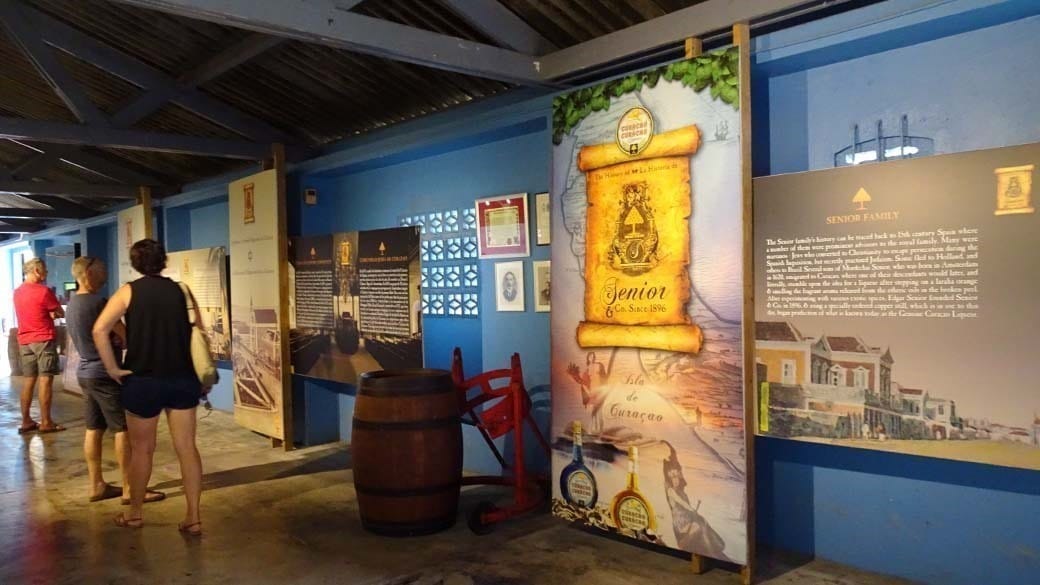
The interior of Landhuis Chobolobo is a museum
Laraha, the golden orange of Curacao
The first Blue Curacao was created in colonial times. Back then, the juicy Spanish Valencia orange was grown on Curacao. What happened when you put an island with a dry climate and cacti in the mix? You got inedible, shrivelled oranges that even the goats wouldn’t eat. These bitter-sour oranges are called Laraha in the local language Papiamentu. At the end of the 19th century, Edgar Senior came up with the idea of making liqueur from the essential oil of the orange peel. The result was “The Genuine Curacao Liqueur”. The bulbous bottles with the structure of the orange peel and the logo with the triangular orange tree are a tribute to the fruit.
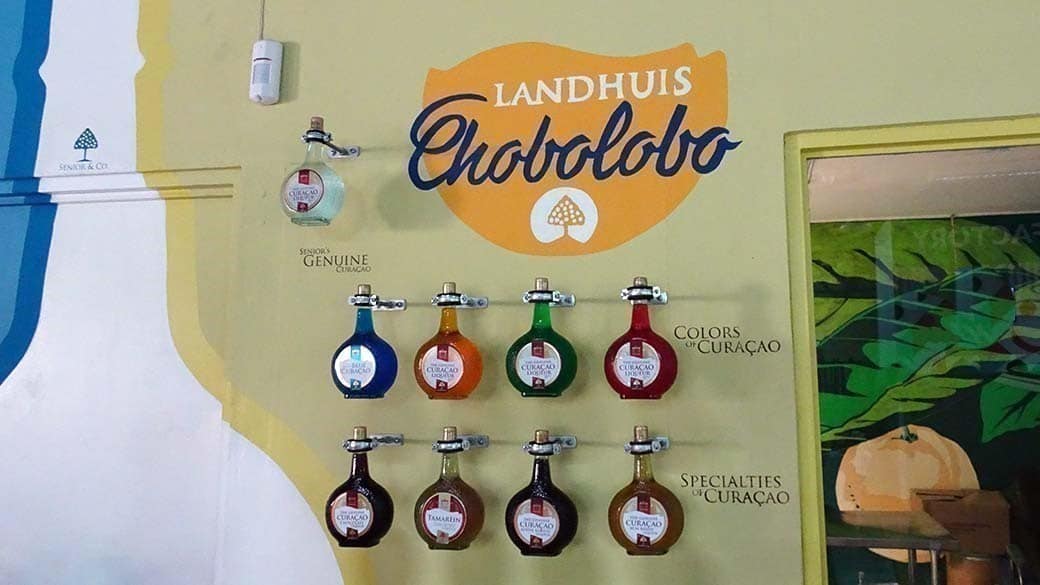
The different, colorful senior liqueurs
There’s only one original Blue Curacao
Only the liqueur made from the Laraha orange subspecies, which only grows on Curacao, can be called “original” Blue Curacao. Unfortunately, the name of an island can’t be protected as a trademark. So, Curacao liqueur can therefore be produced anywhere in the world and sold under the name Blue Curacao. There are also other, younger Curacao liqueurs that are made in Curacao, but then bear the addition “The Classic” and not “Genuine”, for example.
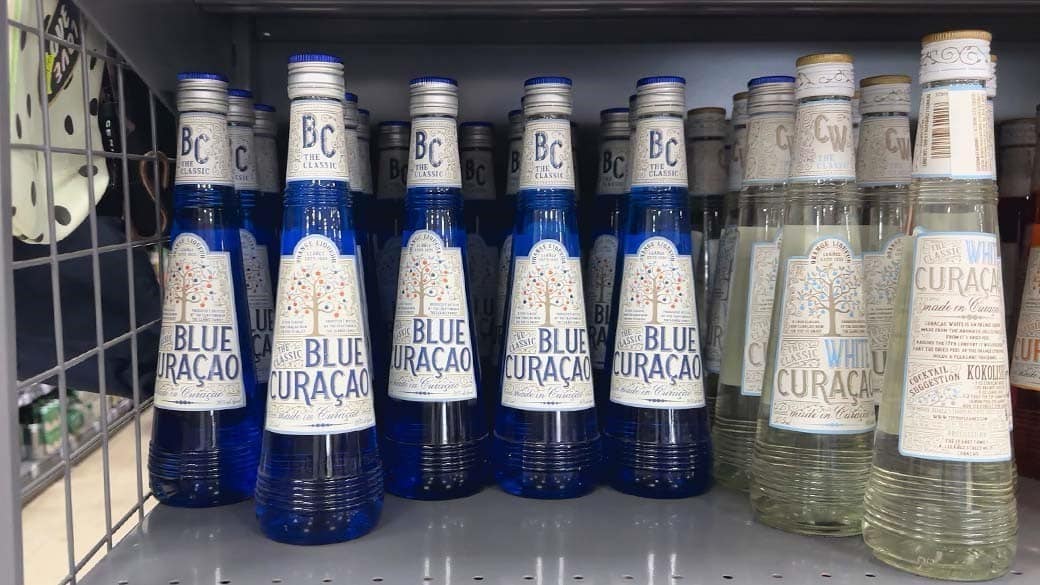
BC The Classic Blue Curacao liqueur
Due to harvest cycles and distillation capacities, the original Senior Liqueur can only be produced in certain quantities. It’s not cheap, either, with a bottle of 374 ml costing just under 17 euros. I couldn’t find it on Amazon. Perhaps you could take a bottle with you as a souvenir? It’s also available in small souvenir sizes, which fit in any luggage – if necessary at the last minute in Duty Free at the airport. Then you can say:
“Hey, this kind of liqueur is available everywhere, but I have the original” (quote from interview with Aldrich Hermelijn from Curacao Chronicle)
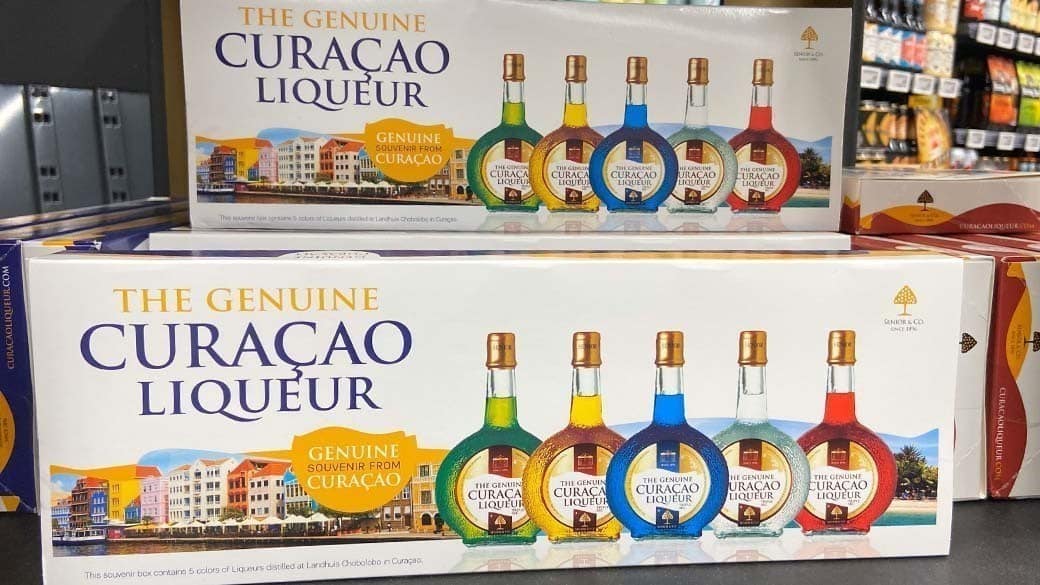
Fitting in every suitcase: Curacao liqueur miniatures
The thing with the color
Originally, the Blue Curacao is a clear one – i.e. transparent and not blue at all. The colored versions are all mixed with colorant, but the blue one is and remains the bestseller. The liqueur factory’s website says that the blue is reminiscent of a vacation in the tropics with a beautiful blue ocean and blue sky. I can only confirm this fact: The southern Caribbean Sea on the beaches around Curacao really does glow as blue as Blue Curacao.
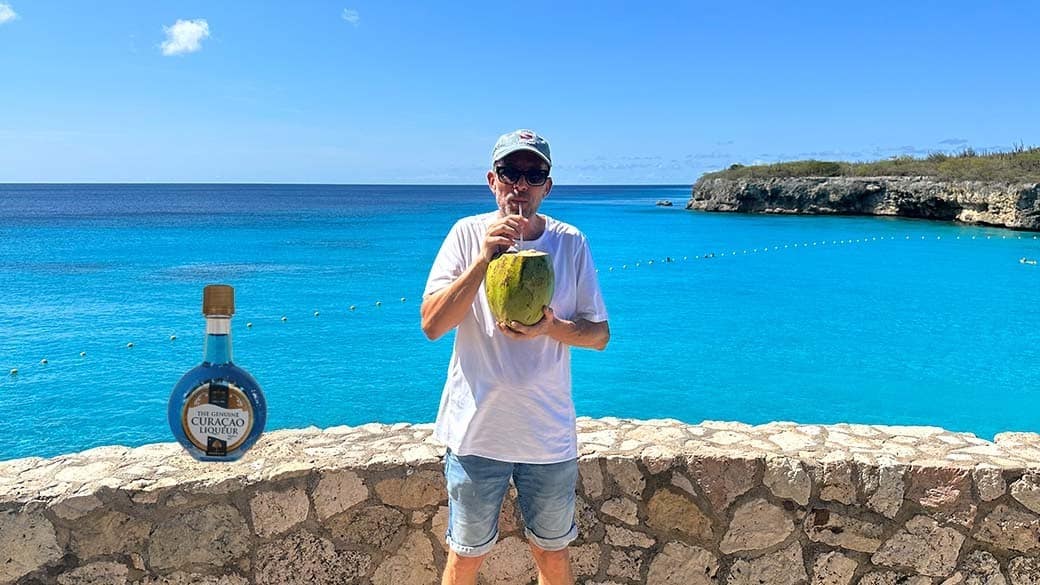
“Swimming pool” at Kenepa Gandi – the sea is as blue as Blue Curacao
There was still something green: Glacial
Many people don’t know that Chobolobo also produces something else that is just as popular and well-known on the island: Glacial, the air conditioning in a bottle with a penguin on it. Instead of bright blue, the liquid inside is poisonous green. The only big difference is that you can’t drink it.
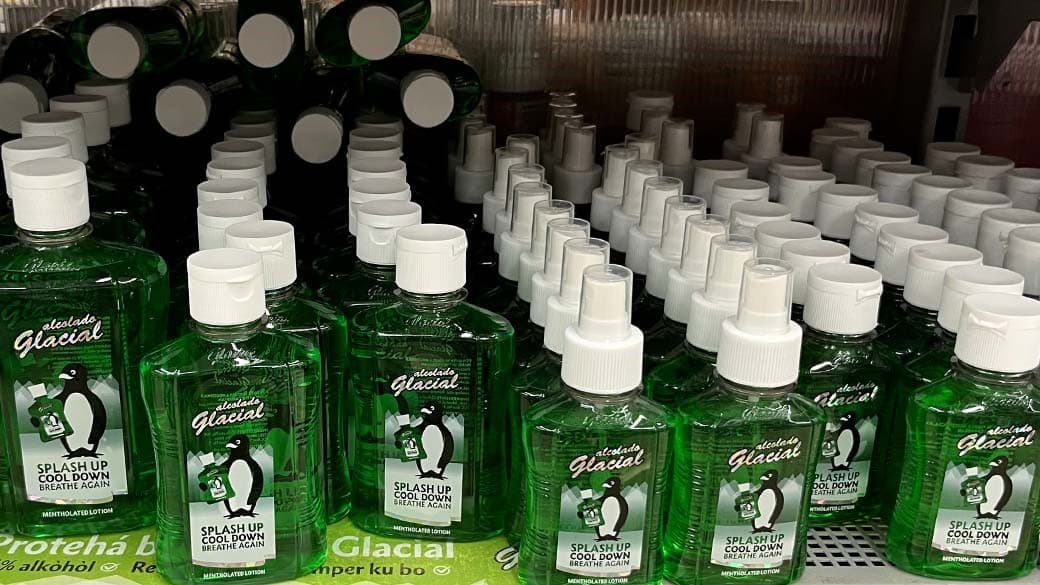
Glacial – splash up – cool down – breathe again
Glacial is a kind of alcohol-based mint liquid that you can spray on to cool yourself down. It not only refreshes, but also soothes mosquito bites. It also works in a similar way to Tiger Balm for rubbing on colds. You can find a bottle of this Caribbean miracle cure on every corner for 2-3 EUR. We were skeptical at first, but it really works. That’s why Glacial ends up in Germany via our suitcases and also comes along with us to other countries we travel to.
The Genuine Blue Curacao has now also arrived in Europe
The Dutch online store now sells all varieties of the original senior liqueurs.
Test your knowledge: We have prepared several hundred questions about Curacao. Have fun!
Quiz Question
From where do you have the best view over the old town of Willemstad?Answer
From the top of the Queen Juliana Bridge – even if only briefly.
The view from up there when crossing the bridge by car is breathtaking and gives you a thrill. Unfortunately, you are not allowed to stop anywhere to take a panoramic photo.
Take care when taking photos from an open car window – it’s extremely windy up there!
Do you like more? Here is another post you might be interested in:
If you enjoyed this article, we would be very happy if you share it with your friends on social media. Thank you very much!
Curacao’s underwater world is just as colorful as its lifestyle! Snorkel over and dive right in! On land, we are sure to inspire you with picture-book beaches and unique nature. If lifestyle means good food and drink to you, then perhaps there’s something for you in Restaurants & Bars.
Blue Curacao – The Genuine Original
The liqueur factory Landhaus Chobolobo

When you hear the name of the island of Curacao, the first thing that usually comes to mind is Blue Curacao. You probably know the bright blue liqueur from the manufacturer Bols as an additive for long drinks or cocktails. But the Blue Curacao liqueurs we know and mix together here in Europe are all just copies. I took a look at the story of the inventor of Blue Curacao. We also personally tried Blue Curacao for ourselves. 😉

Shop window and entrance to ‘The Blue Curacao Experience’ store in Punda
Trip to Landhuis Chobolobo
The Blue Curacao and its sister liqueurs production facility is located in Willemstad in the Salina district, right by the Schottegatweg. It’s pretty unusual for a factory to be in a yellow country house like the Landhuis Chobolobo. But that’s where we went to learn all about the Triple Sec, the different colors and flavors.

Stefan in front of the historic Chobolobo country house
We were lucky enough to stumble upon the Chobolobo country house on an open day without knowing it. There was a lot going on: stalls were set up in the exhibition hall of the distillery and in the courtyard, where local artists were offering their homemade products. All types of liqueur were also available to taste in tiny schnapps bottles. If you can’t decide which variety you would like to take home with you, this will help. You can feel the real liqueur power from the very first sip. No wonder, it has over 30 turns. My absolute favorite is the tamarind liqueur. I like to sip it with a friend from time to time.
The Landhuis Chobolobo is not just a production facility; it’s also a small museum. In the exhibition hall, you can virtually walk through the history of the liqueur:

The interior of Landhuis Chobolobo is a museum
Laraha, the golden orange of Curacao
The first Blue Curacao was created in colonial times. Back then, the juicy Spanish Valencia orange was grown on Curacao. What happened when you put an island with a dry climate and cacti in the mix? You got inedible, shrivelled oranges that even the goats wouldn’t eat. These bitter-sour oranges are called Laraha in the local language Papiamentu. At the end of the 19th century, Edgar Senior came up with the idea of making liqueur from the essential oil of the orange peel. The result was “The Genuine Curacao Liqueur”. The bulbous bottles with the structure of the orange peel and the logo with the triangular orange tree are a tribute to the fruit.

The different, colorful senior liqueurs
There’s only one original Blue Curacao
Only the liqueur made from the Laraha orange subspecies, which only grows on Curacao, can be called “original” Blue Curacao. Unfortunately, the name of an island can’t be protected as a trademark. So, Curacao liqueur can therefore be produced anywhere in the world and sold under the name Blue Curacao. There are also other, younger Curacao liqueurs that are made in Curacao, but then bear the addition “The Classic” and not “Genuine”, for example.

BC The Classic Blue Curacao liqueur
Due to harvest cycles and distillation capacities, the original Senior Liqueur can only be produced in certain quantities. It’s not cheap, either, with a bottle of 374 ml costing just under 17 euros. I couldn’t find it on Amazon. Perhaps you could take a bottle with you as a souvenir? It’s also available in small souvenir sizes, which fit in any luggage – if necessary at the last minute in Duty Free at the airport. Then you can say:
“Hey, this kind of liqueur is available everywhere, but I have the original” (quote from interview with Aldrich Hermelijn from Curacao Chronicle)

Fitting in every suitcase: Curacao liqueur miniatures
The thing with the color
Originally, the Blue Curacao is a clear one – i.e. transparent and not blue at all. The colored versions are all mixed with colorant, but the blue one is and remains the bestseller. The liqueur factory’s website says that the blue is reminiscent of a vacation in the tropics with a beautiful blue ocean and blue sky. I can only confirm this fact: The southern Caribbean Sea on the beaches around Curacao really does glow as blue as Blue Curacao.

“Swimming pool” at Kenepa Gandi – the sea is as blue as Blue Curacao
There was still something green: Glacial
Many people don’t know that Chobolobo also produces something else that is just as popular and well-known on the island: Glacial, the air conditioning in a bottle with a penguin on it. Instead of bright blue, the liquid inside is poisonous green. The only big difference is that you can’t drink it.

Glacial – splash up – cool down – breathe again
Glacial is a kind of alcohol-based mint liquid that you can spray on to cool yourself down. It not only refreshes, but also soothes mosquito bites. It also works in a similar way to Tiger Balm for rubbing on colds. You can find a bottle of this Caribbean miracle cure on every corner for 2-3 EUR. We were skeptical at first, but it really works. That’s why Glacial ends up in Germany via our suitcases and also comes along with us to other countries we travel to.
The Genuine Blue Curacao has now also arrived in Europe
The Dutch online store now sells all varieties of the original senior liqueurs.
Other articles from the “Liftestyle” category that might interest you:
If you enjoyed this article, we would be very happy if you share it with your friends on social media. Thank you very much!
Leave A Comment
Recommended readings from other categories:
Quiz Question
From where do you have the best view over the old town of Willemstad?Answer
From the top of the Queen Juliana Bridge – even if only briefly.
The view from up there when crossing the bridge by car is breathtaking and gives you a thrill. Unfortunately, you are not allowed to stop anywhere to take a panoramic photo.
Take care when taking photos from an open car window – it’s extremely windy up there!
#withus - our articles at your fingertips on a common map - try it!
Blue Curacao – The Genuine Original
The liqueur factory Landhaus Chobolobo

When you hear the name of the island of Curacao, the first thing that usually comes to mind is Blue Curacao. You probably know the bright blue liqueur from the manufacturer Bols as an additive for long drinks or cocktails. But the Blue Curacao liqueurs we know and mix together here in Europe are all just copies. I took a look at the story of the inventor of Blue Curacao. We also personally tried Blue Curacao for ourselves. 😉

Shop window and entrance to ‘The Blue Curacao Experience’ store in Punda
Trip to Landhuis Chobolobo
The Blue Curacao and its sister liqueurs production facility is located in Willemstad in the Salina district, right by the Schottegatweg. It’s pretty unusual for a factory to be in a yellow country house like the Landhuis Chobolobo. But that’s where we went to learn all about the Triple Sec, the different colors and flavors.

Stefan in front of the historic Chobolobo country house
We were lucky enough to stumble upon the Chobolobo country house on an open day without knowing it. There was a lot going on: stalls were set up in the exhibition hall of the distillery and in the courtyard, where local artists were offering their homemade products. All types of liqueur were also available to taste in tiny schnapps bottles. If you can’t decide which variety you would like to take home with you, this will help. You can feel the real liqueur power from the very first sip. No wonder, it has over 30 turns. My absolute favorite is the tamarind liqueur. I like to sip it with a friend from time to time.
The Landhuis Chobolobo is not just a production facility; it’s also a small museum. In the exhibition hall, you can virtually walk through the history of the liqueur:

The interior of Landhuis Chobolobo is a museum
Laraha, the golden orange of Curacao
The first Blue Curacao was created in colonial times. Back then, the juicy Spanish Valencia orange was grown on Curacao. What happened when you put an island with a dry climate and cacti in the mix? You got inedible, shrivelled oranges that even the goats wouldn’t eat. These bitter-sour oranges are called Laraha in the local language Papiamentu. At the end of the 19th century, Edgar Senior came up with the idea of making liqueur from the essential oil of the orange peel. The result was “The Genuine Curacao Liqueur”. The bulbous bottles with the structure of the orange peel and the logo with the triangular orange tree are a tribute to the fruit.

The different, colorful senior liqueurs
There’s only one original Blue Curacao
Only the liqueur made from the Laraha orange subspecies, which only grows on Curacao, can be called “original” Blue Curacao. Unfortunately, the name of an island can’t be protected as a trademark. So, Curacao liqueur can therefore be produced anywhere in the world and sold under the name Blue Curacao. There are also other, younger Curacao liqueurs that are made in Curacao, but then bear the addition “The Classic” and not “Genuine”, for example.

BC The Classic Blue Curacao liqueur
Due to harvest cycles and distillation capacities, the original Senior Liqueur can only be produced in certain quantities. It’s not cheap, either, with a bottle of 374 ml costing just under 17 euros. I couldn’t find it on Amazon. Perhaps you could take a bottle with you as a souvenir? It’s also available in small souvenir sizes, which fit in any luggage – if necessary at the last minute in Duty Free at the airport. Then you can say:
“Hey, this kind of liqueur is available everywhere, but I have the original” (quote from interview with Aldrich Hermelijn from Curacao Chronicle)

Fitting in every suitcase: Curacao liqueur miniatures
The thing with the color
Originally, the Blue Curacao is a clear one – i.e. transparent and not blue at all. The colored versions are all mixed with colorant, but the blue one is and remains the bestseller. The liqueur factory’s website says that the blue is reminiscent of a vacation in the tropics with a beautiful blue ocean and blue sky. I can only confirm this fact: The southern Caribbean Sea on the beaches around Curacao really does glow as blue as Blue Curacao.

“Swimming pool” at Kenepa Gandi – the sea is as blue as Blue Curacao
There was still something green: Glacial
Many people don’t know that Chobolobo also produces something else that is just as popular and well-known on the island: Glacial, the air conditioning in a bottle with a penguin on it. Instead of bright blue, the liquid inside is poisonous green. The only big difference is that you can’t drink it.

Glacial – splash up – cool down – breathe again
Glacial is a kind of alcohol-based mint liquid that you can spray on to cool yourself down. It not only refreshes, but also soothes mosquito bites. It also works in a similar way to Tiger Balm for rubbing on colds. You can find a bottle of this Caribbean miracle cure on every corner for 2-3 EUR. We were skeptical at first, but it really works. That’s why Glacial ends up in Germany via our suitcases and also comes along with us to other countries we travel to.
The Genuine Blue Curacao has now also arrived in Europe
The Dutch online store now sells all varieties of the original senior liqueurs.
Something different you might love:
Curacao is alive and things are always changing. What has changed since our last visit? How is your experience? Would you please share your personal experiences with us? Feel free to write your comment under this article and follow us on our social media channels. There you can spontaneously share your personal impressions with us and our community - "sharing is caring". We look forward to your contribution and every new follower!
Leave A Comment
Quiz Question
From where do you have the best view over the old town of Willemstad?Answer
From the top of the Queen Juliana Bridge – even if only briefly.
The view from up there when crossing the bridge by car is breathtaking and gives you a thrill. Unfortunately, you are not allowed to stop anywhere to take a panoramic photo.
Take care when taking photos from an open car window – it’s extremely windy up there!
#withus - our articles at your fingertips on a common map - try it!


